#and 20th century art/music history
Text
.
#also while I’m already venting about stuff#I can’t decide on grad school in US or Japan bc I have things I love like dislike and hate about both countries#and the main reason I would go to grad school in Japan would be if I wanted to work there bc job hunting starts before graduation#vs if I stay in the US I’d need to do the same thing so I could transition from student visa to work visa#and it would be a lot harder to pivot either direction bc I’m either arriving very late to the Japanese job market without the networking#that school provides unless I depend on my family for networking which I don’t want to do for a lot of reasons#and if I go back to Japan then decide to live and work in the US I need to probably apply from overseas or fly to the US just for job hunt#and will be at a disadvantage to an American citizen who is already in the country#and I don’t know which place I want to live bc I miss japan when I’m in the US but I feel restricted when I’m in Japan and it just feels#so small#and I feel whichever place I pick I’m going to have regrets and I keep pingponging between the two places but I need to pick one#ALSO on top of it I’ve gotten really into linguistics over the course of my undergrad and I know in the US there’s more flexibility to pivot#for masters and I’ve already taken linguistics + English courses and could pivot to that#but I’d have to restructure my whole career path probably#aaaarrrrrrrrrrrrrrrrrgh!#for the record I love business too and econ#and also sociology and cultural anthropology esp of North America#and 20th century art/music history#and the pedagogy of foreign languages#and English in general#RrrRRrgh.
1 note
·
View note
Text

Henri Matisse The Piano Lesson. 1916. Oil on canvas: 245 × 212 cm (96 × 83 in).
#culture#time#history#1910s#art history#henri matisse#jazz#20th century#oil on canvas#art#piano#light academia#learning#vintage#marcel proust#design#musicians#nostalgia#music#light#⏳
938 notes
·
View notes
Text

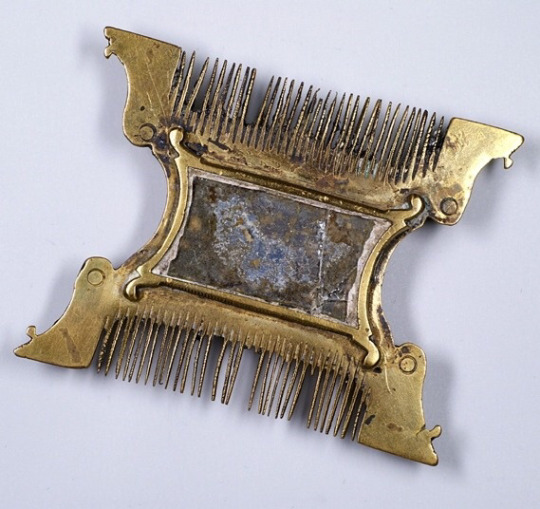

Love 🤍
𝙸𝚗𝚍𝚒𝚊𝚗 𝚑𝚊𝚒𝚛 𝚌𝚘𝚖𝚋𝚜 𝚘𝚏 𝚝𝚑𝚎 19𝚝𝚑 – 20𝚝𝚑 𝚌𝚎𝚗𝚝𝚞𝚛𝚒𝚎𝚜. 🇮🇳
𝙵𝚊𝚋𝚕𝚎𝚜 & 𝙵𝚊𝚒𝚛𝚢𝚝𝚊𝚕𝚎𝚜 - 𝙳𝚎𝚗𝚒𝚣 𝙺𝚞𝚛𝚝𝚎𝚕 𝚁𝚎𝚖𝚒𝚡 𝚋𝚢 𝙽/𝚊, 𝚁𝚘𝚜𝚒𝚗𝚊

#l o v e#19th century#20th century#nostalgia#Indian#art deco#3/2024#hair combs#hairstyle#combs#comb#vintage#India#vintage fashion#art history#fashion history#takemethereforoneday#orient#oriental#oriental fashion#x-heesy#now playing#music and art#fashion#accessories#hair design#aesthetic
101 notes
·
View notes
Text

Jean Sibelius, Antti Favén, 1925
Happy birthday, Jean Sibelius (Dec. 8, 1865-Sept. 20, 1957).
#art#art history#classical music#Sibelius#Jean Sibelius#Antti Favén#portrait#portrait painting#seated portrait#Finland#Finnish art#20th century art#oil on canvas#Finnish National Gallery
59 notes
·
View notes
Text

Louis Thévenet (Belgian, 1874-1930) • Interior with fruit, tableware and ocarina • 1923 • Private collection
Ocarina: (Italian: “little goose”) globular flute, a late 19th-century musical development of traditional Italian carnival whistles of earthenware, often bird-shaped and sounding only one or two notes. – Oxford Languages online dictionary
#art#still life#painting#art history#fine art#louis thévenet#belgian artist#belgian painter#art of the still life blog#oil painting#early 20th century european art#ocarina#musical instruments in art#art blogs on tumblr#art lovers on tumblr#art appreciation
26 notes
·
View notes
Text

An old melody
Eugenio Zampighi
#dancing with the cat#Eugenio Zampighi#italian art#genre art#art#painting#art history#idyllic#music#happiness#19th century#early 20th century#animals
111 notes
·
View notes
Text
Vilhelm Hammershoi, “Interior: The Music Room, Strandgade 30”, 1907
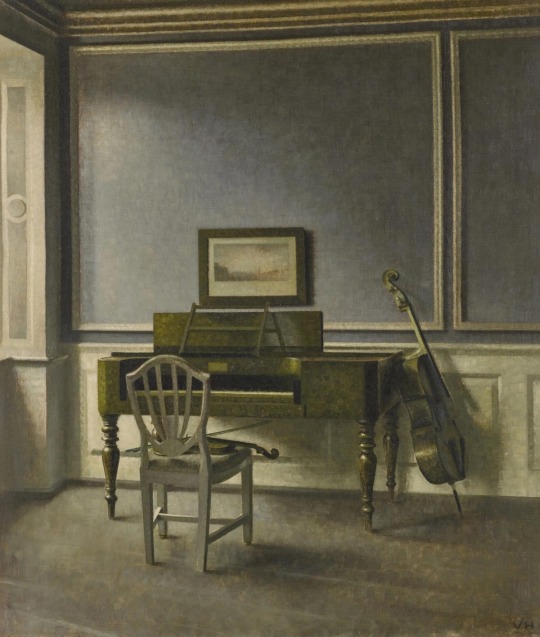
15 notes
·
View notes
Text
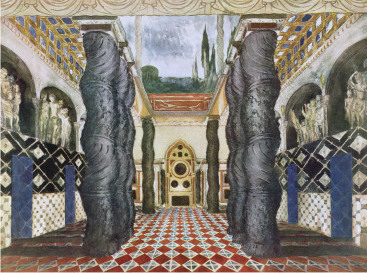


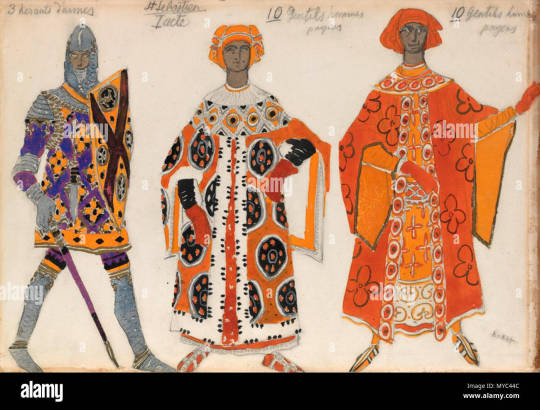

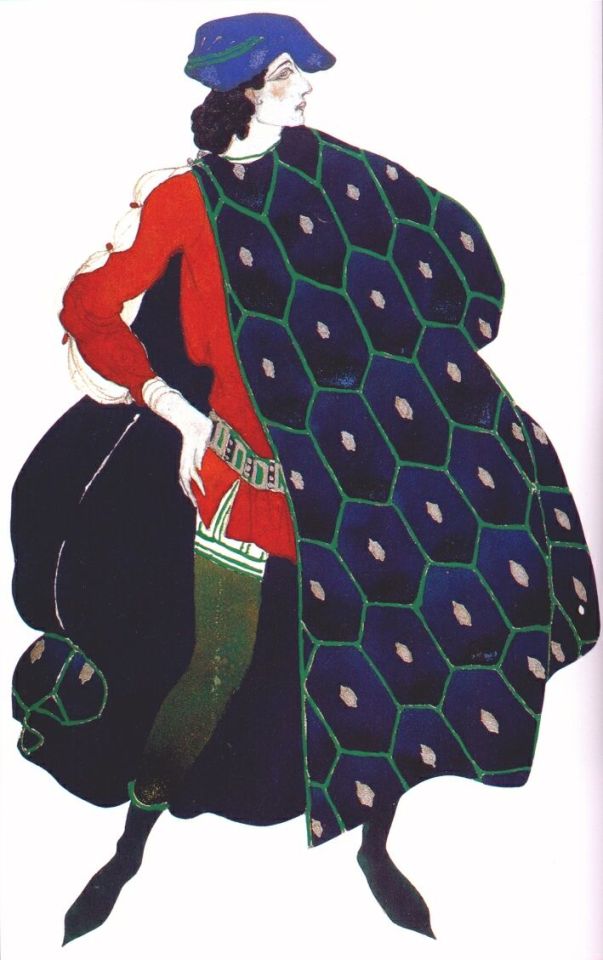

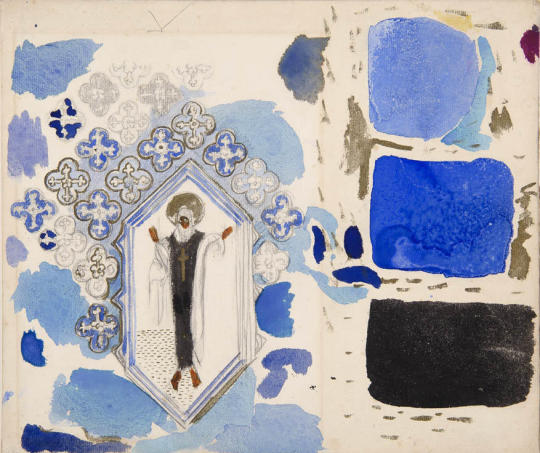
Leon Bakst's set and costume designs for 'Le martyre de saint sébastien', ~1911
(SOOOOOO GORGEOUS I am obsessed w the music from this play and the design and I think ida Rubinstein is really good at being a beautiful gay boy)
(I must go back to gardner museum to see the bottom right pic again .... Eegads!!)
#art history#classic lit#french art#russian art#20th century#victorian art#biblical art#historical art#claude debussy#leon bakst#ida Rubinstein#the martyrdom of saint sebastian#saint sebastian#saint sébastien#opera#musicals#ballet#show biz baby!!!!#set design#costume design#gabriele d'annunzio#le martyre de saint sébastien
17 notes
·
View notes
Text
youtube
Ramsey Lewis Trio - Summer Breeze (1973)
---
youtube.com/watch?v=u6j6Zk945ZY
17 notes
·
View notes
Audio
youtube
In this song/poem, the Valencian singer-songwriter Raimon (born 1940) reflects on his experience of separation from his land that resulted from the schools of Franco’s fascist dictatorship, which ruled Spain between 1939 and 1978.
The school system was tightly controlled by the fascist dictatorship and the Catholic church, and was based on the principle of national-catholicism (the dictatorship’s official ideology) that taught lies to praise the glory of the Spanish Empire and where, of course, the languages nations occupied by Spain (Catalan-Valencian, Basque, Galician, Aranese Occitan, Caló, Asturian, and Aragonese) were forbidden and punishable, and where the history, literature and culture of these cultures were erased.
Here’s the lyrics in Catalan-Valencian and the translation to English:
Al meu país la pluja no sap ploure
O plou poc o plou massa
Si plou poc és la sequera
Si plou massa és la catàstrofe
In my country, the rain doesn’t know how to rain.
It either rains too little or too much.
If it rains little it’s the drought,
if it rains too much it’s a catastrophe.
Qui portarà la pluja a escola?
Qui li dirà com s'ha de ploure?
Al meu país la pluja no sap ploure
Who will take rain to school?
Who will tell it how one should rain?
In my country, the rain doesn’t know how to rain.
No anirem mai més a escola
Fora de parlar amb els de la teua edat
Res no vares aprendre a escola
We’ll never go to school again.
Besides talking to those your age,
you never learned anything in school.
Ni el nom dels arbres del teu paisatge
Ni el nom de les flors que veies
Ni el nom dels ocells del teu món
Ni la teua pròpia llengua
You didn’t learn to name the trees of your landscape,
nor the flowers that you saw,
nor the name of the birds of your world,
nor your own language.
A escola et robaven la memòria
Feien mentida del present
La vida es quedava a la porta
Mentre entràvem cadàvers de pocs anys
In school they stole your memory.
They turned the present into a lie.
Life would stay at the door,
while us who went in were young corpses.
Oblit del llamp, oblit del tro
De la pluja i del bon temps
Oblit de món del treball i de l'estudi
Oblivion of the lighting, oblivion of the thunder,
of the rain and the good weather.
Oblivion of the world of work and of study.
"Por el Imperio hacia Dios"
Des del carrer Blanc de Xàtiva
Qui em rescabalarà dels meus anys
De desinformació i desmemòria?
“Por el Imperio hacia Dios” [Spanish for “For the Empire towards God”, one of the mottos of Franco’s dictatorship]
From Blanc street in Xàtiva [Xàtiva is Raimon’s hometown].
Who will compensate me for my years
of misinformation and misrememberance?
Al meu país la pluja no sap ploure
O plou poc o plou massa
Si plou poc és la sequera
Si plou massa és la catàstrofe
In my country the rain doesn’t know how to rain.
It either rains too little or too much.
If it rains little it’s the drought,
if it rains too much it’s a catastrophe.
Qui portarà la pluja a escola?
Qui li dirà com s'ha de ploure?
Al meu país la pluja no sap ploure
Who will take rain to school?
Who will tell it how one should rain?
In my country, the rain doesn’t know how to rain.
Raimon talks about how the Spanish school system separated him from his country (the Valencian Country in the Catalan Countries).
The song, of course, applies to everyone ruled by a centralist government who decides what is important with no relation to the territories, where people will be taught to speak and write as the dominant group does or as they do in the capital city but not as they do in their homeland; who will learn the historical events that have been chosen to be “national” (for all a state) who might be important for another land but not yours, while your people’s history is purposely erased and forgotten to make you depend on theirs; whose words to name their surrounding can’t be replaced by a foreigners’ government language that never had your land in mind; and where nature-focused knowledge of the lower classes is not deemed “important enough” to be on par with the dominant culture.
Besides this, the extremes of the rain that the song talks about accurate to the Mediterranean weather.
#raimon#música#arts#història#franquisme#history#país valencià#països catalans#national liberation#minority languages#minority rights#20th century history#late modern history#human rights#music#protest music#singer songwriter#folk
22 notes
·
View notes
Text
The Woman Behind The World’s Most Famous Tarot Deck Was Nearly Lost In History

For centuries, people of all walks of life have turned to tarot to divine what may lay ahead and reach a higher level of self-understanding.
The cards’ enigmatic symbols have become culturally ingrained in music, art and film, but the woman who inked and painted the illustrations of the most widely used set of cards today – the Rider-Waite deck from 1909, originally published by Rider & Co. – fell into obscurity, overshadowed by the man who commissioned her, Arthur Edward Waite.

Now, over 70 years after her death, the creator Pamela Colman Smith has been included in a new exhibition at the Whitney Museum of American Art in New York highlighting many underappreciated artists of early 20th-century American modernism in addition to famous names like Georgia O’Keeffe and Louise Nevelson.
CNN
22K notes
·
View notes
Text
𝙽𝚘𝚜𝚝𝚊𝚕𝚐𝚒𝚊𝚕𝚎𝚡 🖤🤍
𝙰𝚕𝚊𝚒𝚗 𝙳𝚎𝚕𝚘𝚗 𝚊𝚗𝚍 𝚁ᴏ𝚖𝚒 𝚂𝚌𝚑𝚎𝚒𝚍𝚎𝚛, 1961
#fashion #fashiongram #fashionable #fashionphotography #fashionlover #fashionart #fashionaddict #fashionphotographer #fashionpost #fashionshoot #fashionlove #fashionlovers #fashioneditoral #editoral #catwalk @frenchpsychiatrymuderedmycnut
𝚈𝚘𝚞𝚛 𝚁𝚞𝚕𝚎𝚜 - 𝙾𝚛𝚒𝚐𝚒𝚗𝚊𝚕 𝙼𝚒𝚡 𝚋𝚢 𝙴𝚍𝚞 𝙸𝚖𝚋𝚎𝚛𝚗𝚘𝚗, 𝚂𝚞𝚝𝚓𝚊 𝙶𝚞𝚝𝚒𝚎𝚛𝚛𝚎𝚣

#l o v e#sad#romy schneider#alain delon#Wedding#3/2024#bridge#vintage#20th century#princess#take me there for one day#bwphotography#fashion history#art history#soul photography#couple#x-heesy#now playing#music and art#vintage fashion#1960s#1960s fashion#nostalgia#actor#actress#old hollywood#1961
20 notes
·
View notes
Text
little bits of irish history for curious hozier fans: street signs edition
Do you love the song Butchered Tongue? Pay attention to these lines here:

So, may I draw your attention to the The Official Languages Act 2003 (Section 9) Regulations 2008 (S.I. No. 391 of 2008).
ok stay with me
In 2008, the Irish government passed legislation that made it mandatory for road signs in Ireland to have both Irish (Gaeilge) AND English names on them (or, in Gaeltacht areas where Gaeilge is still the first language, only in Irish). Here’s an example:

The Irish, or Gaeilge, is always above the English and italicised. This is because that while Gaeilge and English are both official languages of Ireland, Gaeilge is the ‘first’ official language
However, while it was technically only legislated in 2008, bilingual road sings in Ireland had been extremely common for decades prior to it officially being made law. In fact, the first bilingual signs date back to the early 20th century - before our independence from Britain!
In Tom Spalding’s book Layers: The Design, History and Meaning of Public Street Signage in Cork and Other Irish Cities, he found that the first recorded bilingual street sign was in Blackrock, Dublin (An Charraig Dhubh, Baile Átha Cliath). Their local council in 1901 rolled out yellow and black bilingual road sings as part of the Gaelic Revival.
The Gaeilc Revical was a period of time in Irish history that saw a huge resurgence of Gaelic art, sport, and language. Literature was written by Irish people about Irish history, current affairs, and folklore. Traditional Irish music was learned and played again. Gaelic games (Gaelic football and Hurling) spread across the country. And Gaeilge, our language, was to experience an incredible revival.
Despite Ireland’s long colonial history, Gaeilge actually remained the majority tongue until the early 19th century. However, a combination of teachers beating children for speaking it at school, the genocide of the famine wiping out mainly poorer communities more likely to speak Gaeilge, and the knowledge that speaking English unfortunately provided more opportunities than Gaeilge, the language was almost killed off. (This is shown most clearly after the 1800 Act of Union that meant Ireland was ruled directly from London, with no parliament in Dublin).

Although these maps make for grim viewing, Irish is so very far from dead. Our children learn it from the ages of 4-18 in school (though I believe it can and should be taught better, but I digress). Gaeltacht communities are still going strong particularly in the west of the country. There are more Irish-language schools (gaelscoileanna) than ever before.
And every day as we pass by road signs that display Gaeilge proudly, it is as a result of decades, centuries of people refusing to stop speaking our mother tongue despite incredible violence.
I am far from a fluent Irish speaker, despite my 14 years of learning the language in school. But what Gaeilge I have, I have proudly.

(The work isn’t over, however. I do not feel knowledgeable enough to speak on Northern Irish efforts to implement more widespread bilingual signage but anyone who wishes to share some info please do!!)
6K notes
·
View notes
Text
Free MIT online courses that sound interesting
Arts & Literature
Introduction to World Music
Reading Fiction
Literary Interpretation: Virginia Woolf's Shakespeare
Introduction to Photography
Foundations of Western Culture II: Renaissance to Modernity
Studies in Poetry - Briths Poetry and the Sciences of the Mind
Studies in Literary History: Modernism: From Nietzsche to Fellini
Screen Women: Body Narratives in Popular American Film
Studies in Poetry: "What's the Use of Beauty"
Queer Cinema and Visual Culture
Monteverdi to Mozart: 1600 - 1800
Writing and Experience: Reading and Writing Autobiography
Advanced Topics in Hispanic Literature and Film: The Films of Luis Buñel
Major Authors: Rewriting Genesis: "Paradise Lost" and Twentieth-Century Fantasy
Arthurian Literature and Celtic Colonization
Contemporary Literature: Britsh Novel Now
Studies in Poetry: 20th Century Irish Poetry: The Shadow of W. B. Yeats
Writing About Literature: Writing About Love
Introduction to European and Latin American Fiction: Great Books On The Page and On The Screen
Popular Culture and Narrative: Use and Abuse of the Fairy Tale
Victorian Literature and Culture
Reading Poetry
English Renaissance Drama: Theatre and Society in the Age of Shakespeare
Introduction to Fiction
International Woman's Voice
Major Authors: Oscar Wilde and the "90's"
Prizewinners: Nobelistas
American Authors: American Women Authors
Shakespeare, Film and Media
Japanese Literature and Cinema
Woman's Novels: A Weekly Book Club
Classics of Chinese Literature
Major English Novels
Topics in South Asia Literature and Culture
Introduction to Literary Theory
History & Social Studies
American Classics
The Middle East in the 20th Century
Africa and the Politics of Knowledge
The Rise of Modern Science
European Imperialism in the 19th and 20th Century
Philosophy of Love
Human Rights: At Home and Abroad
The Nature of Creativity
Introduction to Comparative Politics
Riots, Rebellions, Revolutions
Introduction to the History of Technology
Ancient Philosophy
Youth Political Participation
#studyblr#study resources#dark academia#light academia#chaotic academia#romantic academia#adhd academia#studyblr brazil#literature#art academia#mit#free courses#study#collegeblr#studyblr college
1K notes
·
View notes
Text

Venetian Melody, 1910
Eugen von Blaas
#Eugen von Blaas#italian art#art#painting#art history#fashion#portrait#music#the girls#Academic Classicism#classicism#1910s#early 20th century
118 notes
·
View notes
Text
Jacob Lawrence, ‘Makeup”, 1952
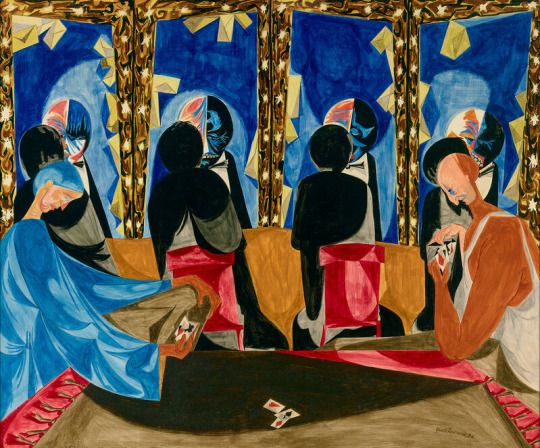
9 notes
·
View notes